الحار منتجات
ملكنا الإخبارية
halite salt units
What is Halite? NaCl, the Rock Salt Crystal Structure
2020年12月27日 Halite is the fancy geology or crystallography name for sodium chloride (NaCl), which may also be known as “rock salt” or “table
26.11A: Structure - Rock Salt (NaCl) - Chemistry LibreTexts
Rock salt (\(\ce{NaCl}\)) is an ionic compound that occurs naturally as white crystals. It is extracted from the mineral form halite or evaporation of
4Halite Mineral Data
General Halite Information : Chemical Formula: NaCl : Composition: ... meaning "salt" and lithos meaning "rock." Name Pronunciation: Halite : Synonym: ICSD 18189 ... (Gamma
Evaporites SpringerLink
2016年12月13日 Quaternary continental playa/lacustrine is constructed of stratiform salt units, with the greater volume of saline sediment accumulating in lower, more saline portions of the lacustrine landscape. Beds are usually dominated by nodular gypsum and displacive halite, deposited in widespread evaporitic mudflats and saltpans, rather than
Salt Chemistry, History, Occurrence, Manufacture,
2024年1月3日 salt (NaCl), mineral substance of great importance to human and animal health, as well as to industry. The mineral form halite, or rock salt, is sometimes called common salt to distinguish it from a class
Evaporites SpringerLink
2018年1月1日 Quaternary continental playa/lacustrine is constructed of stratiform salt units, with the greater volume of saline sediment accumulating in lower, more saline portions of the lacustrine landscape. Beds are usually dominated by nodular gypsum and displacive halite, deposited in widespread evaporitic mudflats and saltpans, rather than
Geomechanical Characterization of Evaporitic Rocks
2019年11月25日 Yan et al. have made various laboratory measurements on halite salt (Gulf Coast domes) for investigating the temperature and pressure effect on seismic velocities of halite salt (Fig. 6.4). It is observed that the velocities increase with the increase of the confining pressure (closing of cracks and pores) at stable temperature and
Properties, Types, Composition, Formation - Geology Science
Modified date: 20/11/2023. Evaporites are a type of sedimentary rock that forms through the evaporation of water, leaving behind dissolved minerals and salts. These rocks typically consist of minerals such as halite (rock salt), gypsum, anhydrite, and various potassium salts. Evaporites are often associated with arid or semi-arid environments ...
Salt Deposits and Gas Cavern Storage in the UK with a Case Study
2004年8月9日 The Lancashire coast beneath Blackpool and Preesall is underlain by the Triassic Mercia Mudstone Group, which includes several salt units with up to 180 m total thickness between 75 m and 385 m depth. Salt was first discovered in the area in 1872. Halite was formerly worked in salt mines at Preesall on the east side of the River Wyre.
KGS--Bull. 215--Nippewalla Group, Permian, Western Kansas
2009年7月1日 Rock salt, or halite, has been an important mineral resource in Kansas since the early days of territorial settlement. In more recent times, subsurface salt-bearing formations have been of importance for reasons other than the mining of salt. ... Correlation and distribution of the evaporite units, mainly halite and anhydrite, have previously ...
Quantifying onshore salt deposits and their potential for hydrogen ...
2023年8月15日 In the Carribuddy B group, halite salt unit is located at 990 m depth where the rock salt exists as main lithology of the core. Two major lithologies were located namely massive and granular halite salts. Massive type rock salt is composed of interlocking halite grains which are in light brown to dark colour in the presence of clay as a minor ...
Halite – Virtual Museum of Molecules and Minerals
Halite. Halite is a common evaporite mineral, NaCl, used as table salt worldwide. It is arguably the most well-known mineral in the world. It has a formula unit composition of NaCl, and is in the cubic crystal system. In pure form it is nearly transparent or white. Rotation of the halite structure such that you are looking at an axis going from ...
KGS--Bulletin 257--The Permian System in Kansas--Subdivisions
2010年4月27日 The halite in the Flower-pot Shale is in marked contrast to the Hutchinson Salt Member that is typically a distinctively bedded, cloudy halite with thin continuous layers of gray mudrock. The distribution of salt in the Nippewalla Group is shown by Mudge (1967, p. 110, fig. 39) and is more extensive than the distribution of the salt in the ...
11.4.2: Unit Cell Symmetry and Crystal Symmetry
The cube, octahedron, and dodecahedron are all special forms that have the same symmetry as the unit cell, 4/m32/m. Tetrahedrite crystals (Figures 11.36 d and 11.40), in contrast with the other three, do not have the same symmetry as their unit cell. Although made of cubic unit cells, the crystals lack 4-fold rotation axes.
Where does salt come from? - UC Santa Barbara
Because salt is so soft, it moves really easily and can pierce through other rock units. Regions in Iran actually contain salt glaciers which can flow over the landscape. This occurs because the region is too arid for rain to dissolve the salt. Answer 4: Chemically, salt is the combination of a sodium ion and a chlorine ion.
XRD Analysis of Some Minerals – PhysicsOpenLab
2018年2月19日 The interplanar distance obtained in in agreement to the exact value which results to be 0.271 nm.. Halite. Halite commonly known as rock salt, is a type of salt, the mineral (natural) form of sodium chloride (NaCl).Halite forms isometric crystals. The mineral is typically colorless or white, but may also be light blue, dark blue, purple, pink, red,
What is Halite? NaCl, the Rock Salt Crystal Structure
2020年12月27日 NaCl, the Rock Salt Crystal Structure. Halite is the fancy geology or crystallography name for sodium chloride (NaCl), which may also be known as “rock salt” or “table salt.”. In materials science, we usually use the term “halite” or “rock salt” when we refer to the generic crystal structure: The halite crystal structure forms a ...
11.4.2: Unit Cell Symmetry and Crystal Symmetry
The cube, octahedron, and dodecahedron are all special forms that have the same symmetry as the unit cell, 4/m32/m. Tetrahedrite crystals (Figures 11.36 d and 11.40), in contrast with the other three, do not have the same symmetry as their unit cell. Although made of cubic unit cells, the crystals lack 4-fold rotation axes.
Where does salt come from? - UC Santa Barbara
Because salt is so soft, it moves really easily and can pierce through other rock units. Regions in Iran actually contain salt glaciers which can flow over the landscape. This occurs because the region is too arid for rain to dissolve the salt. Answer 4: Chemically, salt is the combination of a sodium ion and a chlorine ion.
XRD Analysis of Some Minerals – PhysicsOpenLab
2018年2月19日 The interplanar distance obtained in in agreement to the exact value which results to be 0.271 nm.. Halite. Halite commonly known as rock salt, is a type of salt, the mineral (natural) form of sodium
What is Halite? NaCl, the Rock Salt Crystal Structure
2020年12月27日 NaCl, the Rock Salt Crystal Structure. Halite is the fancy geology or crystallography name for sodium chloride (NaCl), which may also be known as “rock salt” or “table salt.”. In materials science, we usually use the term “halite” or “rock salt” when we refer to the generic crystal structure: The halite crystal structure forms a ...
Three study cases of growth morphology in minerals: Halite, calcite
2016年6月1日 Halite crystallizes in the cubic system, with a face centered lattice, f.c.c. (space group Fm3m), its lattice parameter being a 0 = 5.64Å. Halite, along with all the f.c.c. alkali halides, exhibits a peculiar feature: while the ideal surface structure of both the cube {100} (Fig. 2a) and the rhomb-dodecahedron {110} (Fig. 2b,c) are not polar since the
mp-22862: NaCl (cubic, Fm-3m, 225) - Materials Project
NaCl is Halite, Rock Salt structured and crystallizes in the cubic Fm-3m space group. The structure is three-dimensional. Na1+ is bonded to six equivalent Cl1- atoms to form a mixture of edge and corner-sharing NaCl6 octahedra. The corner-sharing octahedral tilt angles are 0°. All Na–Cl bond lengths are 2.85 Å. Cl1- is bonded to six equivalent Na1+ atoms to
Density of Halite salt, solid in 285 units and reference information
Halite salt, solid weighs 2 170 kg/m³ (135.46867 lb/ft³) Halite salt, solid weighs 2.17 gram per cubic centimeter or 2 170 kilogram per cubic meter, i.e. density of halite salt, solid is equal to 2 170 kg/m³; at 20°C (68°F or 293.15K) at standard atmospheric pressure . In Imperial or US customary measurement system, the density is equal to ...
14.4: Halide Minerals - Geosciences LibreTexts
2022年8月28日 Sylvite (KCl), galena (PbS), periclase (MgO) and several other minerals are isostructural with halite. Halite, a rock-forming mineral, occurs in salt flats, in sedimentary beds, in salt domes, and as deposits from volcanic gasses. Figure 14.304 shows halite deposited along the shores of the Dead Sea.
Halite Mineral Properties, Formation, Uses and Deposits
2023年9月9日 Halite, also known as rock salt or sodium chloride (NaCl), is a naturally occurring mineral that holds significant importance in various aspects of human life. This crystalline mineral is composed of equal parts sodium and chlorine ions and is renowned for its distinctive cubic crystal structure. Halite is not only a common mineral found in
KGS--Geological Log Analysis--Nuclear Porosity Logs
The density curve is scaled in units of grams per cubic centimeter and is referred to as the bulk density. ... As mentioned previously page, the expected log density for pure halite is 2.03 gm/cc. The Hutchinson Salt shows slightly higher values of approximately 2.07 gm/cc that reflects small quantities of impurities, which are probably clay ...
Halite salt, solid weight to volume conversion - Aqua-Calc
About Halite salt, solid. 2 170 kilograms [kg] of Halite salt, solid fit into 1 cubic meter. 135.46867 pounds [lbs] of Halite salt, solid fit into 1 cubic foot. Halite salt, solid weighs 2.17 gram per cubic centimeter or 2 170 kilogram per cubic meter, i.e. density of halite salt, solid is equal to 2 170 kg/m³; at 20°C (68°F or 293.15K) at ...
Salt Density, Strength, Melting Point, Thermal Conductivity
Density of Salt. Typical densities of various substances are at atmospheric pressure. Density is defined as the mass per unit volume.It is an intensive property, which is mathematically defined as mass divided by volume: ρ = m/V In words, the density (ρ) of a substance is the total mass (m) of that substance divided by the total volume (V) occupied by that substance.
Measurement of helium diffusion in Lotsberg Salt cores: A proxy
2024年1月2日 Within the upper Lotsberg unit, the salt deposits are characterized by their relatively pure and high-quality translucent appearance, free from anhydrite interbeds. Nevertheless, there are two distinct 'discontinuities' within the halite sequence, identified as varicolored shales and dolostone layers [50]. In the industry, these features are ...
Halite - an overview ScienceDirect Topics
Salt- and shale-detached gravity-driven failure of continental margins. Mark G. Rowan, in Regional Geology and Tectonics (Second Edition), 2020 Diapir dissolution. Halite and some of the other salt minerals are highly soluble, so dissolve in the presence of undersaturated water. This occurs primarily in the phreatic zone due to the circulation of meteoric
كيفية استخراج وتجهيز الحجر الجيري الأيرلندية
جزء في شمال شرق لى محطم
الخردة المعدنية الفك محطم في الموقع إزالة المعادن الخردة
أفضل آلة كسارة في كوالالمبور ماليزيا
استخدام كسارة الفك في مصنع التعدين
كيفية جعل منجم الذهب محطم
سلسلة scm مطحنة رقيقة جدا مطحنة scm في
الحجر الجيري كسارة تقرير المشروع
halite salt units
حجم الأعلاف على الكرة المنتج مطحنة
معدات معالجة الذهب للبيع في نيجيريا
مكائن مكرر�من الذهب
فروش هلی کوپتر
ميزات كسارة عملية مخروط
كسارة مخروطية 150 طن ساعة كسارة فكية متنقلة 50 طن لكل
سنگ شکن سنگی قابل حمل برای فروش چین
تستخدم الموردين الحزام الناقل
شركة المعادن الشمالية مسقط
طريقه استخراج الذهب من الصخور
خطة عمل نموذج مصنع الفحم
كسارة محطم رخيصة الثمن
سرعة حرجة من مطحنة الكرة لطحن الخامات
التعدين ممهدة الطرق
كسارة الصانع آلة ميكرونيزيا
موردي مطحنة ذهب مصر
تعدين الذهب الفلبين كسارة الذهب
حول لدينا
تأسست شركة Henan Lrate للعلوم والتكنولوجيا المحدودة التي تصنع معدات التكسير والطحن الكبيرة والمتوسطة الحجم في عام 1987. وهي شركة مساهمة حديثة مع البحث والتصنيع والمبيعات معًا.
على مدار أكثر من 30 عامًا ، تلتزم شركتنا بنظام الإدارة العلمية الحديث والتصنيع الدقيق والريادة والابتكار. الآن أصبحت LIMING رائدة في صناعة تصنيع الآلات المحلية والخارجية.



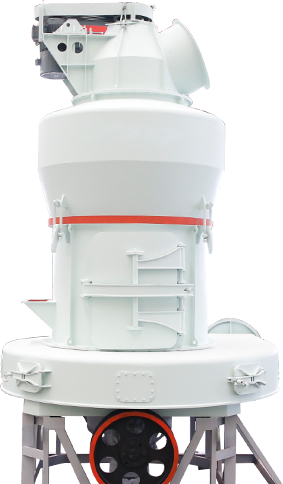


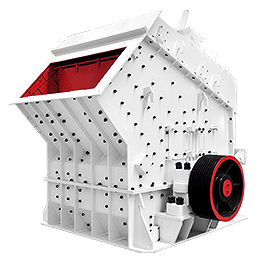
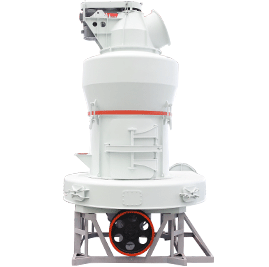
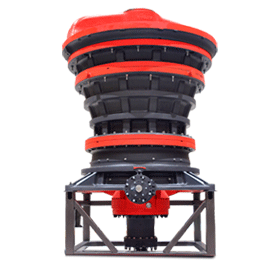
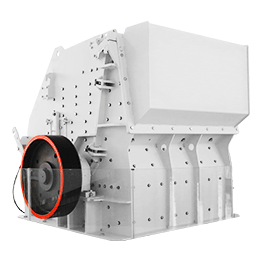

 2021/07/20
2021/07/20